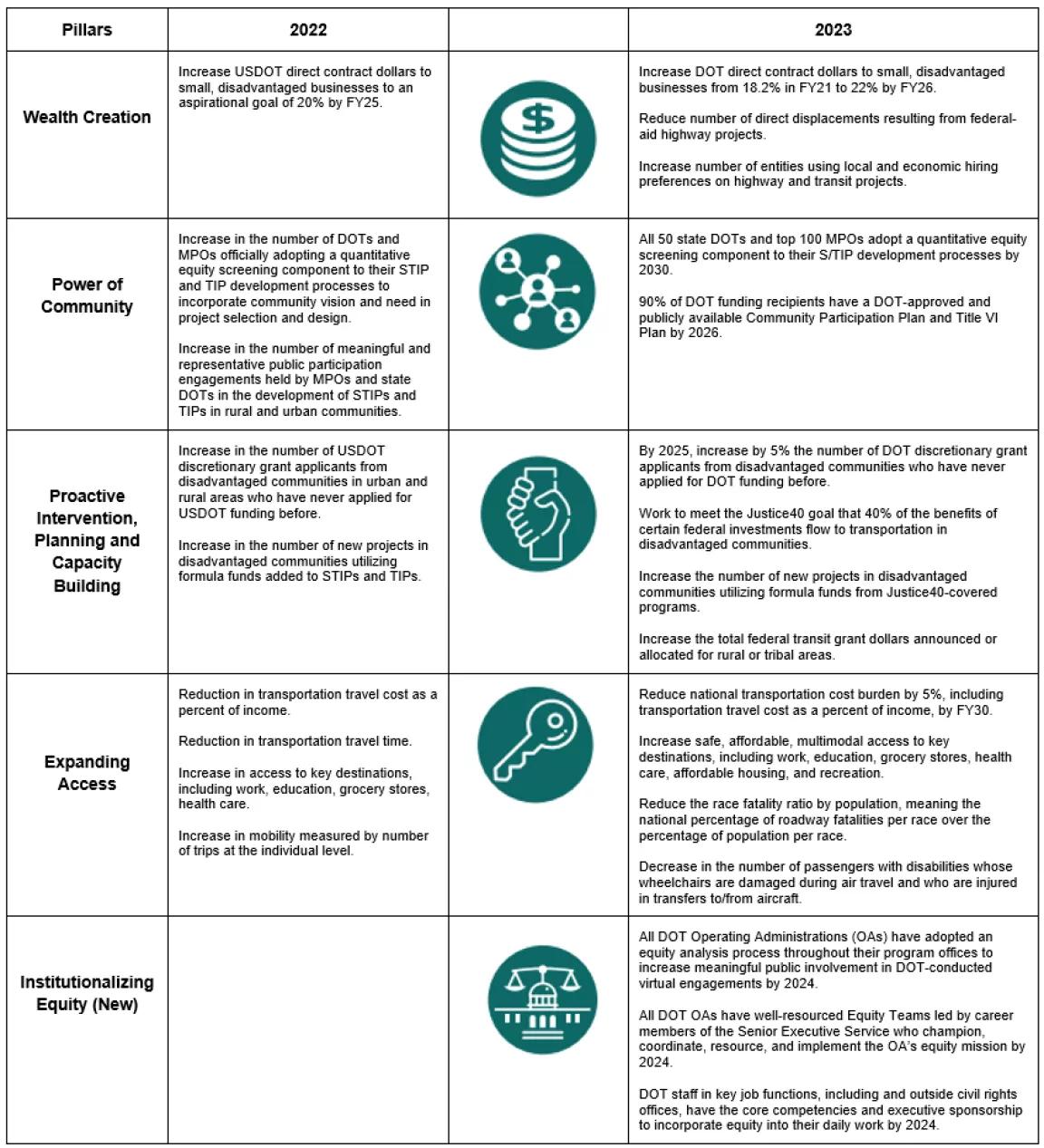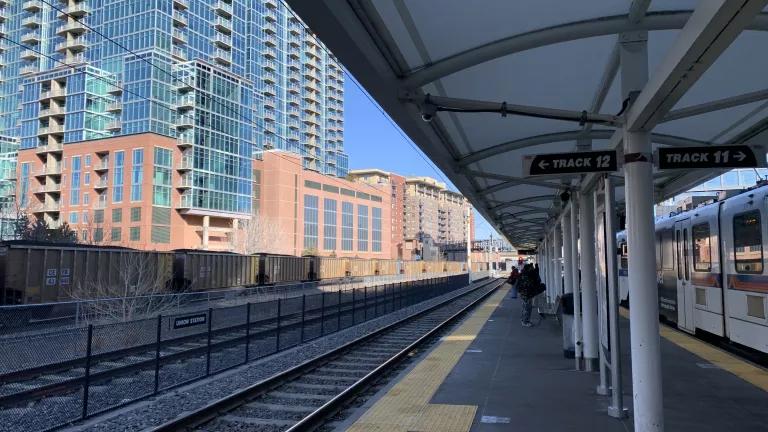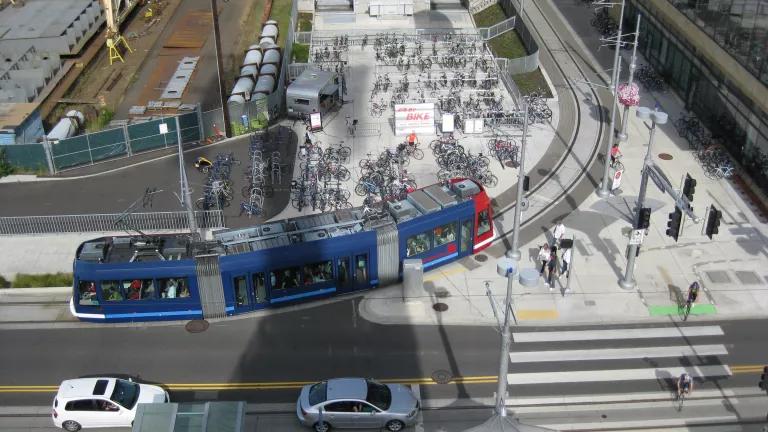U.S. DOT’s Updated Equity Action Plan: Key Takeaways and Recommendations by the Transportation Equity Caucus
This blog was collaboratively created by Mende Yangden (NRDC) and the Transportation Equity Caucus (TEC).
The release of the U.S. Department of Transportation's (DOT) updated Equity Action Plan (EAP) is a crucial milestone in the ongoing effort to promote equity within the transportation sector. This update, a response to Executive Order (EO) 14091, reflects the continued commitment from the administration to prioritize equity and repair past harms caused by transportation investments. This iteration builds upon the groundwork laid by EO 13945, which mandated the creation of the initial EAP in 2022, and reflects both progress made and areas for future improvement as the DOT continues to refine its equity approach.
The updated EAP is structured around five pillars, each targeting specific equity outcomes within the transportation sector. These pillars include: Wealth Creation; Power of Community; Proactive Intervention, Planning, and Capacity Building; Expanding Access; and the newly introduced Institutionalizing Equity. Each pillar represents a critical component of the DOT's equity agenda, but there is still room for refinement and improvement to ensure that equity metrics are robust, measurable, and aligned with the overarching goals of the EAP. Below is a side-by-side comparison of the metrics outlined in both EAPs.
The Wealth Creation pillar focuses on increasing the amount of money flowing from the DOT to disadvantaged businesses. This year, it also includes two new metrics that focus on reducing community displacement caused by highway projects as well as increasing local employment. The new metrics are a welcome addition, but they still lack measurable outcomes and accountability mechanisms. The DOT should incorporate more specific targets into this pillar to achieve EAP goals. For example, the community displacement metric should include a percentage or total number of displacements that the DOT wants to decrease and a timeline. Doing so makes progress toward these additional goals more measurable and creates accountability.
The Power of Community pillar will improve public engagement by giving individuals and communities a greater voice in transportation decisions. This pillar has the most refined metrics with clear quantitative outcomes and timelines that clearly address community needs. However, they can be improved by integrating more qualitative metrics that reflect the lived experiences of the communities most affected by transportation projects. Survey questions that capture underserved communities' attitudes and perceptions about how their priorities are being met and the ease of participation in public engagement activities are examples of qualitative metrics DOT should consider. Qualitative tools used by public agencies, such as Los Angeles Metro’s Rapid Equity Assessment tool and Seattle region’s Equity Impact Review tool are examples of already existing tools that DOT can explore to create qualitative metrics.
The Proactive Intervention, Planning, and Capacity Building pillar will ensure that historically underserved communities benefit from transportation investments by providing direct, hands-on technical support for transportation projects. This pillar features a mix of both new and modified metrics. The metrics are generally broad in scope and could benefit from being more ambitious, measurable, and time-bound. The DOT should also incorporate community-based organization compensation initiatives within this pillar. By providing compensation for participation, along with technical assistance, DOT could encourage greater and more consistent involvement.
The Expanding Access pillar aims to increase economic opportunities for underserved communities by improving multimodal transportation options and reducing costs. This pillar introduces new metrics that address fatalities based on race, as well as indicators designed to improve accessibility for individuals with disabilities. While these additions acknowledge the racial nature of fatalities and the need for inclusive accessibility, this pillar could also benefit from clearer measurability and timelines. In addition to encouraging non-car travel options, the DOT should implement enhancement measures, such as tracking the number of bike lanes to improve, and build infrastructure that supports these alternatives. There also needs to be a clear plan to address the decades of transportation policy favoring automobile mobility over other options, such as walking and biking.
The introduction of the Institutionalizing Equity pillar marks a significant step toward embedding equitable practices within DOT culture. This pillar is aimed at integrating equity into DOT operations, including changing agency decision-making processes and organizational structure. Metrics for this pillar include adopting an equity analysis process and creating dedicated equity teams. This new pillar holds promise in driving meaningful change and ensuring that equity considerations permeate all facets of the DOT's work.
Since the release of the initial EAP, the DOT has performed key activities to advance equity within the transportation sector. For example, the Federal Highway Administration has begun tracking residential and nonresidential displacements. The agency also created the DOT navigator to provide technical assistance and capacity building for grantees. Moreover, the DOT released funding for several equity-focused grant programs, such as Reconnecting Communities and Neighborhoods, Thriving Communities, Reconnecting Communities. The DOT also created the Advisory Committee on Transportation Equity. These initiatives represent a substantial step toward creating an equitable transportation system, but more work is needed.
Overall, we need to ensure that the EAP metrics are robust, that community engagement–especially from historically underserved and overburdened communities–is meaningful, and that equity principles are operationalized into DOT processes and culture.
In response to the DOT's request for comments on its 2022 EAP, the Transportation Equity Caucus (TEC) submitted a letter outlining several key concerns and priorities that should be incorporated in future EAPs and DOT policy:
- The need for DOT to demonstrate a stronger agency-wide commitment to equity
- Ensuring that the performance metrics in the EAP focus on delivering improved transportation equity outcomes rather than singular issues
- Actively involving feedback and priorities from environmental justice and frontline communities in the development of the equity action plan
- Providing a longer comment period (more than 30 days) to allow community-based organizations and environmental justice communities sufficient time to provide feedback
The updated EAP addressed the TEC’s comments regarding the institutionalization of equity processes, but it has not incorporated other suggestions. Addressing transportation inequality resulting from decades of harmful investment decisions is a long and complex process. While the current administration has created space for this conversation, it does not guarantee its permanence and accountability. Regulatory agencies like the DOT will need to continue efforts–such as improving EAPs on a regular basis and publicly reporting data and tracking progress on equity-related metrics–to create an equitable transportation system that works for all.
Please reach out to Mende Yangden (myangden@nrdc.org), Senior Associate for Equity and Community Partnerships, NRDC and Co-Lead of the TEC Federal Policy Working Group if you have any questions.





